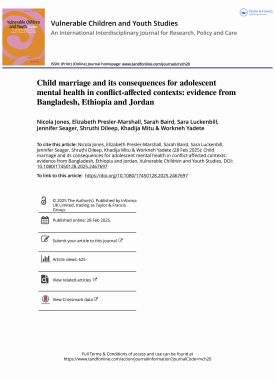This situation analysis synthesises what is known about the capabilities of adolescent girls living in Jordan. Where possible, it uses disaggregation in order to better focus on the unique vulnerabilities and opportunities facing Jordanian, Palestine refugee, and Syrian refugee girls. It also highlights the key actors working to create change in girls’ lives.
First briefly explaining the Jordanian context—and Jordan’s long history as a refugee hosting country—the analysis then turns to each of GAGE’s capability domains: education, physical health and nutrition, bodily integrity, psychosocial well-being, voice and agency, and economic empowerment. Drawing on both academic and grey literature, it summarises what is known about each, identifies trends and patterns across time and between populations of girls, and highlights the gaps where GAGE is poised to contribute to the evidence base.
Overall, the situation analysis concludes that the capabilities of girls living in Jordan are deeply uneven. While they are more likely to be enrolled in school than boys, and tend to do better academically, refugee girls are highly vulnerable to child marriage and adolescent pregnancy, and girls from all communities face sharp limits on their mobility, access to voice and agency, and economic empowerment. Increasing numbers of actors are working with and for girls in Jordan, although to date the impact evaluation evidence base on the effectiveness of these interventions remains fledgling.
Suggested citation
Presler-Marshall, E., Gercama, I. and Jones, N. (2017) Adolescent girls in Jordan: the state of the evidence. London: Gender and Adolescence: Global Evidence. (https://www.gage.odi.org/publication/adolescent-girls-jordan-state-of-evidence/)


